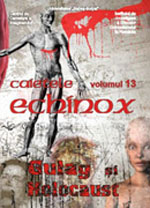Barocul fascisto-comunist ca fenomen global
The „Fascist-Communist Baroque” as a Globalization Phenomen
Author(s): Caius DobrescuSubject(s): Politics / Political Sciences
Published by: Universitatea Babeş-Bolyai
Keywords: Communism; Fascism; counterculture; cultural globalization; ideological syncretism; intellectuals; nativism; elites.
Summary/Abstract: The main thesis of the present paper is that, after World War II, Communism and Fascism were not perceived, in common life, as two distinct ideological and political patterns. Instead, their attitudes, symbols, strategies intermingled in an eclectic compound which could be called, following Vladimir Tismaneanu's suggestions on the nature of the Ceausescu regime in Romania, a „Fascist-Communist baroque”. Considering the Western counterculture of the Sixties, and the different forms of East European nationalist Communism as the influences that shaped the mind of the radical elites of the Third World in the second half of the 20th century, the analysis points to an ambiguous, though persistent, blending of rationalist progressivist-egalitarian and nativist earth-and-blood ideological items. The conclusion of this survey is that global radicalism in the period investigated is best described as a ”diffusion of the diffuse”, as the expansion not so much of coherent totalitarian doctrines, but of expressive life-styles marked by a baroque syncretism of extreme-right and extreme-left utopian beliefs. This leads to the assumption that the cultural and educational policies that aim to make the world a better place for democratic liberalism should proceed to a simultaneous ”de-fascization” and ”de-communization”.
Journal: Caietele Echinox
- Issue Year: 2007
- Issue No: 13
- Page Range: 15-25
- Page Count: 11
- Language: Romanian
- Content File-PDF

